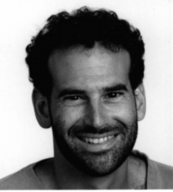May 28th, 2009
 In May 2006 we formed a team to compete in DARPA’s 2006-2007 « Urban Challenge, » the goal of which was to develop a passenger vehicle capable of safe, robust autonomous driving in city traffic. Over the following eighteen months, we built the team up to roughly twenty-five members, acquired more than a half-million dollars worth of sensors and mobile computers and data storage systems, assembled two autonomous vehicles, wrote (and discarded) hundreds of thousands of lines of new code, and tested our system extensively in various closed and public road networks around the country.
In May 2006 we formed a team to compete in DARPA’s 2006-2007 « Urban Challenge, » the goal of which was to develop a passenger vehicle capable of safe, robust autonomous driving in city traffic. Over the following eighteen months, we built the team up to roughly twenty-five members, acquired more than a half-million dollars worth of sensors and mobile computers and data storage systems, assembled two autonomous vehicles, wrote (and discarded) hundreds of thousands of lines of new code, and tested our system extensively in various closed and public road networks around the country.
This talk surveys some of the issues that arose in the project, including systems design, sensor choice, environment/surround representation, codification of driving rules, algorithm development, testing methods, and safety. We’ll show lots of real data, and examples of our algorithms doing reasonable and not-so-reasonable things. We will describe our experiences through the final stages of the competition. Finally, we’ll attempt to identify some of the lessons we learned from the project. In particular, we will contrast two divergent approaches to the development of autonomous vehicles emerging from the robotics community: one centered on persistent data infrastructure, the other on just-in-time mobile sensing.
Seth Teller (MIT, USA)
Slides :


